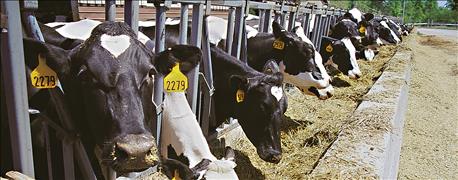November 3, 2016

Dried distillers grains are a coproduct of dry-milled ethanol production. U.S. ethanol plants have the capacity to produce more than 15 billion gallons of ethanol and 45 million tons of DDG annually, according to the Agricultural Marketing Research Center.
Approximately 17 pounds of DDG at 10% moisture content are produced from 1 bushel of corn. Of the 45 million tons of DDG produced, about 11.2 million tons are exported.

WHY DDG PRICES VARY: Here is a look inside markets for a relatively new commodity produced by the ethanol industry.
Another way to gauge the use of DDG is to estimate the quantity of it substituted for corn and soybean meal. Estimated DDG substituted for corn and soybean meal for the 2016-17 marketing year is projected to be approximately 1.235 billion bushels of corn and 6.52 million tons of soybean meal, once again according to ARMC.
Get handle on price trends
Given the substitutability of DDG for corn and soybean meal, we would expect DDG prices to be significantly related to these feedstuffs. Statistical analysis using price data obtained from monthly issues of Feed Outlook indicates the DDG price is highly correlated with corn and soybean prices. Results of the statistical analysis are as follows:
• Each 10-cent-per-bushel increase in corn price results in a $2.57-per-ton increase in DDG price.
• Each $10-per-ton increase in soybean meal price results in a $1.59-per-ton increase in DDG price.
Other pricing factors
Though both corn prices and soybean meal prices are significantly related to DDG price, these two prices only explain about 83% of the variability in DDG prices. There are times when the predicted DDG price is either substantially below or above the actual DDG price.
This reveals the difficulty associated with predicting DDGs prices if looking at just corn and soybean price information. However, most of the time corn and soybean meal prices are helpful in predicting DDG price.
This is an important finding because DDG prices are not as readily available for tracking purposes as corn and soybean meal prices. This makes it difficult to gauge the impact of DDG prices on projected feed costs for a livestock producer trying to work out budgets.
Langemeier is associate director of the Purdue University Center for Commercial Agriculture. He writes from West Lafayette.
You May Also Like




